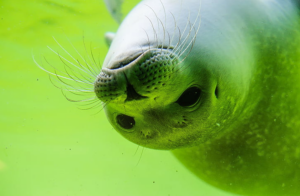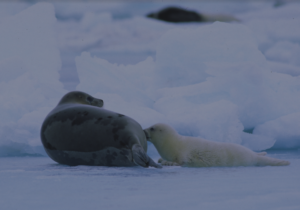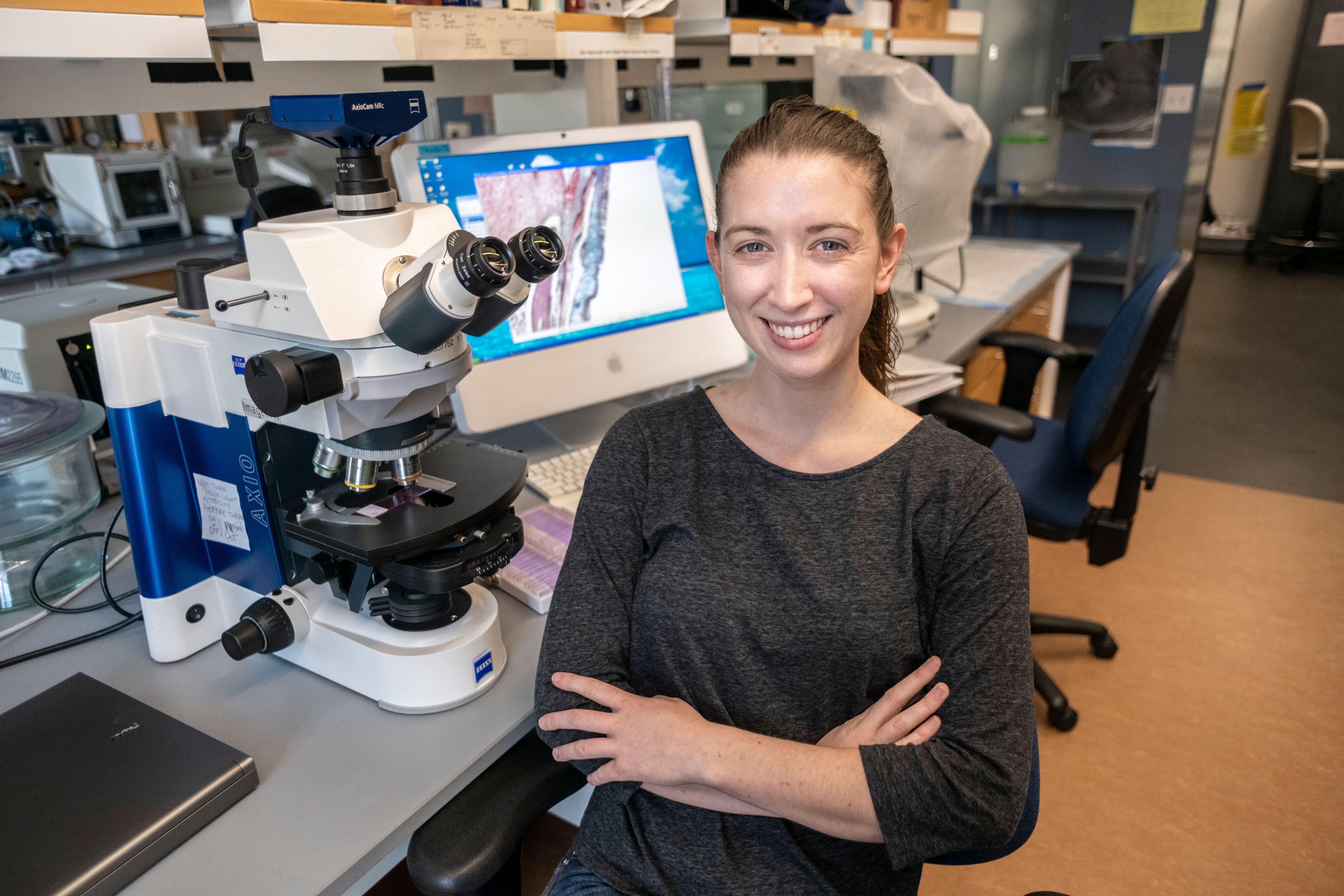Millions of years ago, in the era following the extinction of dinosaurs, mammalian ancestors of seals and sea lions took the first steps into coastal waters. These steps were the beginning to the transition from life on land to life in water. Marine mammals were presented with many challenges that required adaptation for the aquatic environment. These changes echo throughout the anatomy of marine mammals such as their limbs turned to flippers, their teeth that closely resemble their canine ancestors, and their ability to sense their environment using sight, sound, taste, hearing, and touch. We are familiar with how these senses work in our own daily life on land. However, aquatic mammals must sense their environment and translate that information much differently in the water.
The ability of marine mammals to sense touch has changed dramatically from their land ancestors. Terrestrial and marine mammals use their whiskers to feel the size and shape of objects they encounter. Cats, for example, use their whiskers to discriminate the width of a space, and rats use their whiskers to investigate objects and surfaces. Pinnipeds (seals, sea lions, walruses, and otters) use their whiskers to find prey items in the water. They can use their whiskers to find clams, urchins, and other crustaceans on the sea floor, similarly to terrestrial mammals, through direct contact with the object.

Pinnipeds have size and shape discrimination capabilities that rival a chimpanzee’s abilities using their fingers (1). Seals and sea lions have shown an additional capability using their whiskers: the ability to detect underwater movements created by their prey. They can detect the water flows created by the tail beats of swimming fish with their whiskers to follow the fish and capture it, a behavior termed hydrodynamic trail-following.
Seals are particularly good at this behavior and can follow underwater trails for several minutes with high success rates. The globally abundant harbor seal has held center stage for the bulk of these behavioral studies, but little is known about how their whiskers play into foraging (3). Their remarkable sensing capabilities inspired researchers to investigate the anatomy, or structure, of seal whiskers (2).
New research has shown that harbor seals have a similar sensitivity in their whiskers to other seal species. Researchers measure sensitivity by estimating the number of nerves in a whisker (innervation) and compare the level of innervation among other species of seals, sea lions, and otters. Interestingly, harbor seals have increased innervation, and therefore more sensing capabilities, in their largest whiskers on the outer edge of their muzzle (4). When a seal is swimming, this group of whiskers extends past the seal’s head, making them important for finding the signals left behind from their prey.
Researchers can now combine this new information about harbor seal whiskers with previous research on different species of seal whiskers to understand which anatomy patterns are associated with certain behaviors. Since harbor seals excel at trail-following, we can use their whisker anatomy as a model for seals that utilize this behavior. Then, when researchers examine the whisker anatomy of seal species more difficult to study in captivity, they can compare the innervation to harbor seal whiskers to learn more about these species.

For example, harp seals are an Arctic species that spend most of their time on ice, where they are hard to reach. Although the possibility of field study may be limited, their whisker anatomy can be studied more easily. When researchers did study their whisker anatomy, harp seals had lower sensitivity in comparison to harbor seals (5). This may mean that harp seals do not use the trail-following behavior observed in harbor seals as much, and might use other foraging techniques to capture their prey (fish and crustaceans). These insights can be important for understanding the lives of seals in remote habitats, especially important when these habitats are rapidly disappearing in a warming climate.
This work showcases how something seemingly as obscure as whiskers may serve as a tool to understand how marine mammals forage and track prey. There is a wealth of knowledge from studying harbor seals in captivity that can be combined with all the other tools available, such as anatomy and field studies, to learn more about how seals interact with their environment in order to survive and thrive, even when faced with environmental changes.
Sources
- Dehnhardt G, Kaminski A. 1995. Sensitivity of the mystacial vibrissae of harbor seals (Phoca vitulina) for size differences of actively touched objects. Journal of Experimental Biology. 198:2317-2323.
- Hyvarinen H, Palviainen A, Strandberg U, Holopainen I. 2009. Aquatic environment and differentiation of vibrissae: comparison of sinus hair systems of ringed seal, otter and pole cat. Brain, Behavior, and Evolution. 74:268-279.
- Dehnhardt G, Mauch B, Hanke W, Bleckmann H. 2001. Hydrodynamic trail-following in harbor seals (Phoca vitulina). 293:102-104
- Jones AE & Marshall CD. 2019. Does vibrissal innervation patterns and investment predict hydrodynamic trail following behavior of harbor seals (Phoca vitulina)? The Anatomical Record. 302:1837-1845.
- Mattson EE, Marshall CD. 2016.
- 2009. Life Ascending. Profile Books, Ltd, London.
I love writing of all kinds. As a PhD student at the Graduate School of Oceanography (URI), I use using genetic techniques to study phytoplankton diversity. I am interested in understanding how environmental stressors associated with climate change affect phytoplankton community dynamics and thus, overall ecosystem function. Prior to graduate school, I spent two years as a plankton analyst in the Marine Invasions Lab at the Smithsonian Environmental Research Center (SERC) studying phytoplankton in ballast water of cargo ships and gaining experience with phytoplankton taxonomy and culturing techniques. In my free time I enjoy making my own pottery and hiking in the White Mountains (NH).

